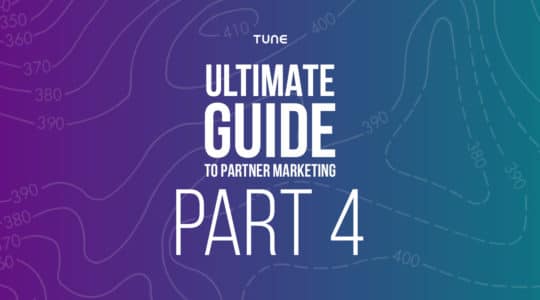
Photo by Kaboompics.com on Pexels
If you’re a podcaster, it’s a good time to be in podcasting. If you’re a marketer, it’s a great one.
Podcast popularity has climbed steadily over the past five years: an estimated 67 million Americans listen to podcasts every month, with the average listener subscribing to six shows. As an emerging channel, podcasts offer marketers — particularly mobile marketers — fresh advertising opportunities and untapped supply, in a space that currently lacks the rigid commodification models found in more traditional channels. Yet with new opportunities come new challenges.
In this blog post, we’ll take a look at some of the advertising opportunities and challenges that podcasts offer mobile marketers. Then, we’ll explore how advertising in this space might be following in the footsteps of over-the-top TV.
OTT and new opportunities in advertising supply are just two of the topics you’ll hear about at the mobile event of the summer, Postback 2018. This July, join 1,000 mobile experts, CMOs, advertising partners, and others to network and learn over two days of exclusive events in Seattle, WA.
Advertising Opportunities in Podcasts
Podcast advertising is climbing at an 85% year-over-year clip, and was up to more than $220 million in 2017. For marketers, the major benefit of the podcast as an advertising medium is how users consume it: with the same attention and frequency as their favorite TV shows. E.W. Scripps Co. found that, on average, podcast listeners make it through about 90% of a given episode. Even better, NPR found that 75% of listeners actually took action on a sponsored message.
Integrated ads are the most popular form of advertising within podcasts. In integrated ads, the podcast host simply reads an advertisement during the podcast. These ads often include a show- or episode-specific promotion codes and instructions on how to redeem it. In this format, listeners are less likely to skip ads for fear of missing important parts of the episode. However, everyone who listens to the podcast gets the same ad, limiting targeting capabilities.
Another ad format that’s increasing in popularity is the dynamically inserted ad. With these ads, the ad server determines the best spot to serve to the listener and inserts it into the podcast. If the podcast is listened to online instead of downloaded, the ad server will insert ads at designated breaks. Ads delivered programmatically offer deeper insights, such as listener content preferences and ad completion rates. The challenge with dynamically inserted ads is that some publishers may count the dynamic ad as an impression without confirming actual delivery.
Attribution and ROI Challenges
Along with the promise of podcast advertising comes unique challenges.
For one, consumers often listen on “thin-client” devices, such as the Amazon Echo, on which dynamic ad serving isn’t possible. This limits real-time creative personalization. Listeners also tend to download podcasts and listen without an internet connection, which limits advertising insights beyond pure delivery and estimated impressions.
Another challenge is that the ads are typically served in apps, and in-app ads are not tied to cookies. This limits advertisers from getting a more holistic view of the consumer across devices. Aggregate reports from the IAB currently estimate that less than 3% of publishers are capable of providing client-side tracking data.
Following in the Footsteps of OTT
Podcasting isn’t limited to bloggers or influencers. Several brands have created successful viral podcasts. Mastercard, for example, teamed up with Gimlet to create a podcast called Fortune Favors the Bold about the future of money. Blue Apron created a podcast titled Why We Eat What We Eat to share more of their company’s story and build connections with consumers.
Of course, the secret to a successful branded podcast is to make it feel authentic and engaging — not like an advertisement.
As CRO of Midroll Lex Friedman explained, “No one wants to listen to a 10-episode podcast about how great ZipRecruiter is at finding a job or helping hire the right applicant. But if we can create a show with someone like entrepreneur and author Seth Godin about what it means to be successful and being the most productive person around, that’s going to appeal to exactly the kind of people that ZipRecruiter wants to reach.”
In many ways, podcasting is following in the early footsteps of OTT. Marketing dollars are starting to flow in, making up for the lag that sometimes occurs when a new technology explodes into the marketplace faster than marketers saw it coming or knew how to make the most of it. As audio advertising expands, attribution and ROI will get more sophisticated.
The benefit of podcast advertising is that it allows brands to find extremely niche audiences; the challenge is ensuring the podcasts have an ROI that makes them worthwhile. It’s no small endeavor, because in addition to writing, producing, and finding talent for podcasts, brands also have to allocate budget to buy ad space to ensure they’re discovered by the consumers they want to reach.
But for the brands that do it right, podcasts present an opportunity to advertise — without it feeling like advertising — to a new audience of consumers.
OTT and new opportunities in advertising supply are just two of the topics you’ll hear about at the mobile event of the summer, Postback 2018. This July, join 1,000 mobile experts, CMOs, advertising partners, and others to network and learn over two days of exclusive events in Seattle, WA.
Author
Becky is the Senior Content Marketing Manager at TUNE. Before TUNE, she handled content strategy and marketing communications at several tech startups in the Bay Area. Becky received her bachelor's degree in English from Wake Forest University. After a decade in San Francisco and Seattle, she has returned home to Charleston, SC, where you can find her strolling through Hampton Park with her pup and enjoying the simple things between adventures with friends and family.




Leave a Reply
You must be logged in to post a comment.